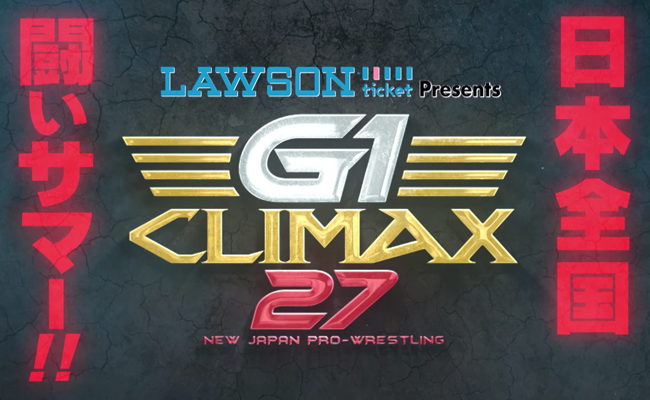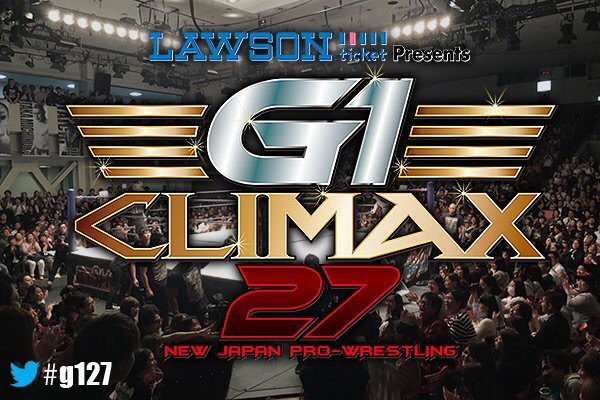
It’s that time of the year again, wrestling fans! The G1 Climax is back, and that means we’re in for a whole lot of late nights, early mornings, and some of the best damn professional wrestling on the planet. If you’re new to the G1 Climax, or perhaps just getting started down the rabbit hole of New Japan Pro Wrestling, we’ve put together this guide full of Frequently Asked Questions that should make the transition a bit easier.
If you have any questions that you don’t see answered in this guide, please feel free to ask them in the comments section down below and we’ll keep you updated as quickly as possible. You can also check out our Wrestlezone Radio exclusive podcast running down this year’s G1 brackets, possible scenarios for the final round and more.
* * * * *
FREQUENTLY ASKED QUESTIONS
What is the G1 Climax?
The G1 Climax is New Japan Pro Wrestling’s annual tournament exclusively for heavyweight wrestlers. This year 20 stars will be divided into two blocks and will compete in a series of round robin matches. After each competitor has had a chance to wrestle against every star in their block, the two with the most points will square off in the G1 Finals to crown the winner.
When did it start? Has it always had the same format?
The G1 Climax officially started in 1991 and has undergone many changes to its format over the years. Technically the company’s annual heavyweight tournament has its roots dating back to the World League in 1974, but New Japan Pro Wrestling officially recognizes the rebranded 1991 tournament as the beginning of the modern G1.
The G1 has had as little as eight competitors and as many as 22. For much of its history the tournament actually took pace over a short period of time (the 2002 G1 was only four days long) but due to numerous injuries and the career-shortening amount of strain placed on the competitors’ bodies it has expanded in recent years.
How is the G1 different from the New Japan Cup that happened earlier this year?
The New Japan Cup is a shorter single-elimination tournament and is largely considered a minor event compared to the annual G1. The winner does get a championship match, but it’s generally to set up the main event for a secondary show like Invasion Attack or Wrestling Dontaku. In WWE terms, think of the New Japan Cup like the King of the Ring. It’s a cool event and has had some prestigious winners, but it’s never been at the heights of the Royal Rumble, where the winner punches his ticket to the main event of WrestleMania.
What does the winner of the G1 get?
First and foremost, every wrestler that competes in the G1 does so for the glory and honor of winning. Some of the greatest stars in the history of professional wrestling have tried and failed to win the tournament. The distinction of G1 Climax Winner essentially guarantees your place as a future legend within New Japan Pro Wrestling. This is a tournament so prestigious, with the winner so carefully hand-picked, that since its inception only two winners (Hirooki Goto and Kenny Omega) have yet to capture the IWGP Heavyweight Championship. Beyond the legacy created, in recent years the winner has also received a championship match in the main event of Wrestle Kingdom.
So why does the IWGP Heavyweight Champion compete in the G1 if the winner gets a title shot at Wrestle Kingdom?
That’s sort of like asking why Michael Jordan competed in the 1992 Olympic Games after the Chicago Bulls won their second consecutive NBA Championship. The G1 is the greatest competition for heavyweight wrestlers anywhere in the world, and as arguably the top heavyweight wrestler on the planet the IWGP Heavyweight Champion would never willingly miss an opportunity to prove his metal. Also, the stipulation that the winner gets a title shot at Wrestle Kingdom is relatively new. It’s been speculated that if the current reigning champion won the tournament, he would be able to handpick his opponent for the Tokyo Dome.
As someone new to NJPW would I recognize any of the former winners or competitors?
If you’re relatively new to NJPW the obvious answer is Kenny Omega. Before becoming the first North American in history to win the G1 Climax, Omega had very little wide recognition in the west beyond his appearances on U.S. independents. Since then he has wrestled the “six star” match with Kazuchika Okada at the Tokyo Dome, signed a merchandising deal with Hot Topic, been featured by numerous mainstream U.S. media outlets, approached by WWE, and headlined New Japan’s first expansion into the American market. If that’s not a testament to the launching power of the G1 Climax, I don’t know what is…
If you’re an older fan or study wrestling history you may recognize all-time greats like five-time winner Masahiro Chono, WWE Hall of Famer Tatsumi Fujinami, Keiji Mutoh (aka the Great Muta), Riki Choshu or Shinya Hashimoto. In the last decade we’ve seen winners like Hiroshi Tanahashi, Shinsuke Nakamura, Kazuchika Okada and Tetsuya Naito. But If you’re totally new to the Japanese wrestling scene here are a few former G1 competitors you’ve probably heard of: Big Van Vader, Bam Bam Bigelow, Steve Austin, Arn Anderson, Ric Flair, Jim Neidhart, Rick Rude, AJ Styles and Finn Balor.
When does it take place and how many shows are there?
G1 Climax 27 kicks off on July 17th and will feature a total of 19 shows, concluding with the G1 Finals on August 13th.
What will each show contain?
In order to minimize injuries the two blocks will alternate between each show. For instance, the opening night on July 17th will feature five tournament matches from the A BLOCK while the following show on July 20th will feature five B BLOCK tournament matches. The rest of the card will be made up of tag team matches featuring stars from the opposite block to promote their upcoming bouts. In this way all 20 G1 competitors will be in action on all 19 shows of the tournament, but they won’t all have to take three months off when it’s over.
For example, the July 17th opener will see Tetsuya Naito vs. Kota Ibushi and Hiroshi Tanahashi vs. Zack Sabre Jr. in tournament matches from the A BLOCK. So on that card you might see B BLOCK stars Kenny Omega and Tama Tonga team up to take on Michael Elgin and Minoru Suzuki (probably not) to promote their tournament matches on July 20th.
How do I watch the G1?
The entire tournament will air live on New Japan World, which you can subscribe to for less than $10 a month. Because every subscription auto-renews on the first of the month, it will only cost you $20 to see the entire thing.
Will there be English commentary?
Last year Kevin Kelly and Steve Corino provided English commentary for the final three shows of the G1 Climax. This year Kevin Kelly and Don Callis will be calling the first four shows of the tournament as well as the final three. Kevin’s ultimate goal for 2018 is to convince New Japan to let them call the entire tour for the first time.
Yeah I’m a normal human being with a job. I can’t be awake at 4AM for a month straight…
Filthy casuals… In all seriousness, we understand the struggle. We’ll have you covered with live coverage and complete results of all 19 events during the G1 Climax this year so you can keep up to date with what’s happening while at work. Plus, every show is uploaded to New Japan World shortly after it finishes, so you can always go back and catch up at a time that’s convenient for normal human beings to be awake.
THE COMPETITORS
Coming Soon…





